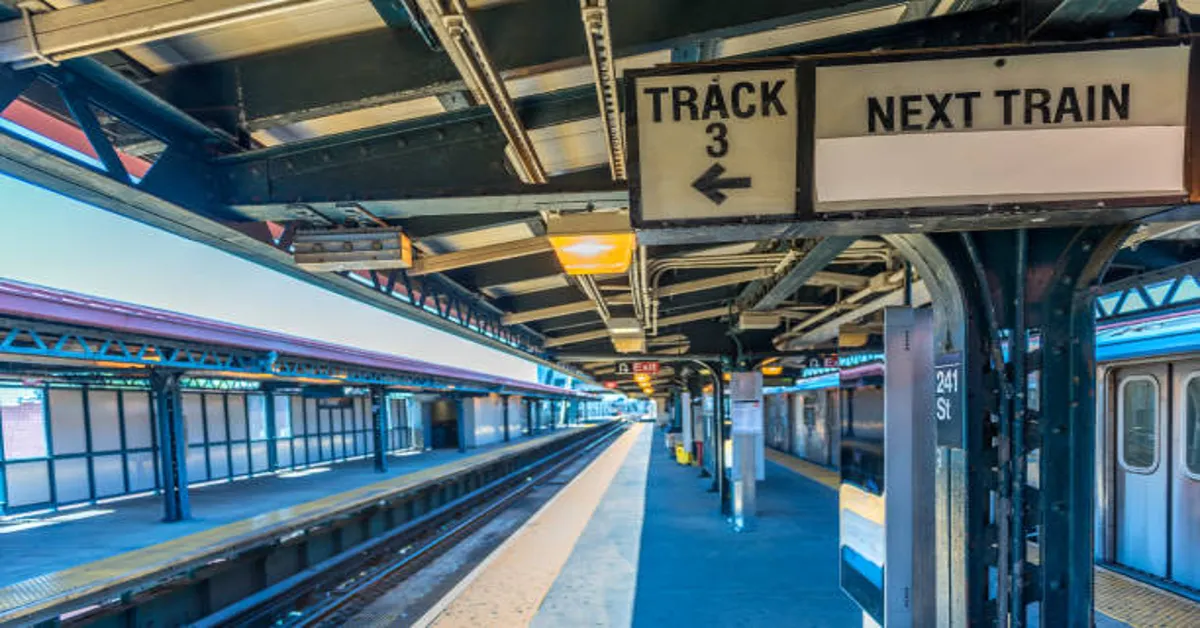The N train is one of New York City’s most vital subway lines, connecting diverse neighborhoods across multiple boroughs with a combination of local and express service. It plays a central role in moving people between residential areas, bustling commercial districts, and iconic destinations. Understanding the N train stops, the structure of the line, its schedules, and how it fits into the broader Metropolitan Transportation Authority (MTA) subway system is essential for daily commuters, occasional travelers, and tourists who rely on this lifeline.
This article provides an in-depth exploration of N train stops, including their historical context, operational details, unique features, and commuting strategies. Whether you are planning your first ride or you travel daily, the knowledge here will ensure that your journey is smoother, better informed, and more efficient.
The Historical Background of the N Train
The N train is part of the BMT (Brooklyn–Manhattan Transit) division of the New York City Subway. Its origins can be traced back to the early 20th century when rapid transit expansion was underway to support the city’s growth.
The N line originally began as part of the Fourth Avenue Line in Brooklyn, designed to provide better connections from southern Brooklyn to Manhattan. Over time, as the subway network expanded, the N line absorbed new segments, adopted new routes, and adapted to changing passenger needs. During the 1967 Chrystie Street Connection changes, which integrated BMT and IND services more closely, the N line underwent significant restructuring. These historical changes explain why the N train has a mix of express and local characteristics today.
General Overview of the N Train Line
- Type of Service: Local and express (depending on segment and time of day).
- Division: BMT (Brooklyn–Manhattan Transit).
- Color Designation: Yellow (shared with Q, R, and W trains).
- Route Coverage: Travels through Brooklyn, Manhattan, and Queens.
- Key Connection Points: Major transfers at Atlantic Avenue–Barclays Center, Times Square–42nd Street, and Queensboro Plaza.
The line not only connects boroughs but also offers access to major employment centers, cultural institutions, and tourist destinations.
Complete List of N Train Stops
Below is a table of all current N train stops, arranged by borough.
| Borough | Station Name | Connections / Notes |
|---|---|---|
| Brooklyn | Coney Island–Stillwell Avenue | Terminal station, connection with D, F, Q |
| 86th Street | Local service | |
| 79th Street | Local stop | |
| 71st Street | Local stop | |
| Bay Parkway | Local stop | |
| 20th Avenue | Local stop | |
| 18th Avenue | Local stop | |
| New Utrecht Avenue | Transfer to D line | |
| Fort Hamilton Parkway | Local stop | |
| 8th Avenue | Local stop | |
| 59th Street | Transfers to R train | |
| 36th Street | Transfers to D and R trains | |
| Atlantic Avenue–Barclays Center | Major hub, transfers to B, Q, R, 2, 3, 4, 5 | |
| DeKalb Avenue | Transfers to B, Q, R | |
| Manhattan | Canal Street | Transfer to Q, R, 6, J, Z |
| Prince Street | Local stop | |
| 14th Street–Union Square | Transfers to 4, 5, 6, Q, R, L | |
| 34th Street–Herald Square | Transfers to B, D, F, M, Q, R | |
| Times Square–42nd Street | Transfers to 1, 2, 3, 7, Q, R, S | |
| 57th Street–Seventh Avenue | Connection to Q, R | |
| Queens | Queensboro Plaza | Transfers to 7, W |
| Astoria–Ditmars Boulevard | Northern terminal station |
This table reflects the key stops that shape the N train’s journey from Brooklyn’s southern tip through Manhattan and into northern Queens.
Service Patterns and Scheduling
The N train operates as both an express and local train depending on time and segment:
- Brooklyn:
- Express service is provided on the Fourth Avenue Line during rush hours, skipping several local stops between 36th Street and Atlantic Avenue.
- Local service is more common during late evenings and weekends.
- Manhattan:
- The N train primarily runs express along Broadway, stopping at major stations such as Canal Street, 14th Street–Union Square, 34th Street–Herald Square, and Times Square–42nd Street.
- It provides a quicker north-south connection compared to the R, which runs local along the same corridor.
- Queens:
- The N runs local along the Astoria Line, serving every stop from Queensboro Plaza to Ditmars Boulevard.
The typical frequency of trains ranges from 4–6 minutes during peak rush hours to 10–12 minutes late at night.
Significance of the N Train in the Subway System
The N line’s importance can be understood by examining its impact on different boroughs:
- Brooklyn: Provides southern Brooklyn neighborhoods such as Bensonhurst and Gravesend with fast access to Manhattan.
- Manhattan: Offers a vital Broadway express link, easing congestion from uptown to downtown.
- Queens: Connects Astoria to Manhattan efficiently, making it one of the most popular lines in northwest Queens.
The N train also relieves pressure on parallel lines such as the R, which is entirely local, and the Q, which serves a partially overlapping route.
Accessibility and Passenger Experience
Accessibility is a crucial consideration for subway riders. While not all N train stops are fully ADA-compliant, many major transfer stations like Atlantic Avenue–Barclays Center and Times Square–42nd Street are equipped with elevators and other facilities.
Passengers also benefit from:
- Digital Countdown Clocks: Real-time arrival information.
- Transfer Opportunities: Access to multiple other lines for expanded mobility.
- Proximity to Landmarks: Stops like Times Square, Union Square, and Coney Island connect riders directly to major attractions.
Travel Tips for N Train Riders
- Rush Hour Considerations:
- During morning and evening rush hours, express service can save significant time between Brooklyn and Manhattan.
- Night Travel:
- Expect longer waits at night. Planning transfers ahead can reduce overall travel time.
- Tourist Advice:
- For tourists, riding the N train Stops to Coney Island offers a scenic end to the trip, while stops like Canal Street and Times Square provide shopping and entertainment options.
- Transfer Efficiency:
- Union Square and Atlantic Avenue are ideal transfer points to connect with multiple other lines.
Future Prospects and Planned Improvements
The MTA continuously updates and renovates infrastructure to keep pace with growing ridership. Potential improvements affecting the N line include:
- Station modernization projects for better lighting, accessibility, and passenger flow.
- Upgrades to signal systems to allow for more frequent train operations.
- Ongoing ADA-compliance efforts to expand accessibility across more stations.
These improvements aim to ensure that the N train Stops remains reliable and safe for decades to come.
Table: Comparison of N Train with Parallel Broadway Line Services
| Line | Service Type | Boroughs Served | Key Features |
|---|---|---|---|
| N Train | Express in Manhattan & Brooklyn; Local in Queens | Brooklyn, Manhattan, Queens | Direct Coney Island–Astoria connection |
| Q Train | Express in Manhattan; Local in Brooklyn & Queens | Brooklyn, Manhattan, Queens | Serves Second Avenue line; Coney Island terminal |
| R Train | Local only | Brooklyn, Manhattan, Queens | Slower but covers more local stations |
| W Train | Local | Manhattan, Queens (Astoria) | Peak-only, complements N in Astoria |
This comparison highlights the N train’s unique balance between speed and coverage.
Conclusion
The N train is more than just a means of transportation—it is a thread that ties together the cultural, residential, and economic fabric of New York City. From the amusement parks of Coney Island to the bustling commercial avenues of Midtown Manhattan and the vibrant neighborhoods of Astoria, the N train Stops provides an essential lifeline. By understanding the complete list of stops, service patterns, transfer opportunities, and future prospects, riders can make the most of their journeys, whether they are daily commuters or first-time visitors.
With its mix of express speed and broad coverage, the N train Stops continues to stand as one of the most versatile and relied-upon subway lines in the city.
ALSO READ: W und S: A Comprehensive Exploration of Its Meaning, History, and Applications
Frequently Asked Questions (FAQs)
Q1. What are the terminal stations of the N train?
The N train runs between Coney Island–Stillwell Avenue in Brooklyn and Astoria–Ditmars Boulevard in Queens.
Q2. Is the N train express or local?
It operates as both: express in Manhattan and Brooklyn during peak times, and local in Queens.
Q3. How often does the N train run late at night?
During late-night hours, N trains typically arrive every 10–12 minutes, though wait times may vary.
Q4. Can I take the N train to Times Square?
Yes, the N stops at Times Square–42nd Street, one of the busiest transit hubs in New York City.
Q5. Which major attractions can I reach via the N train?
Key destinations include Coney Island, Union Square, Herald Square, Times Square, and Astoria in Queens.









